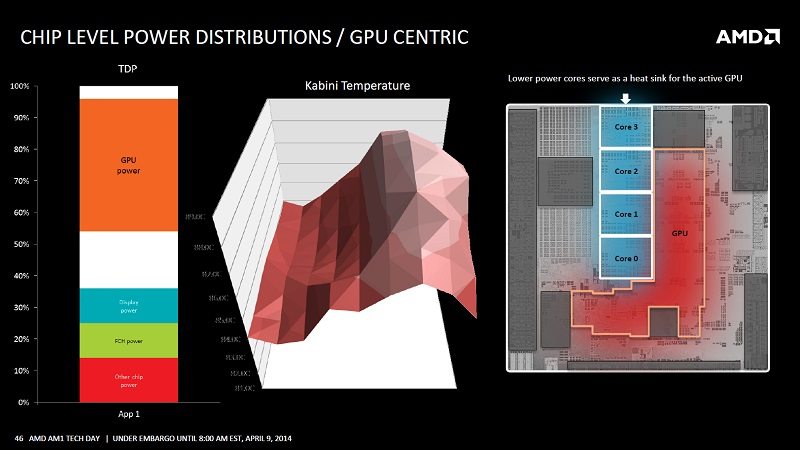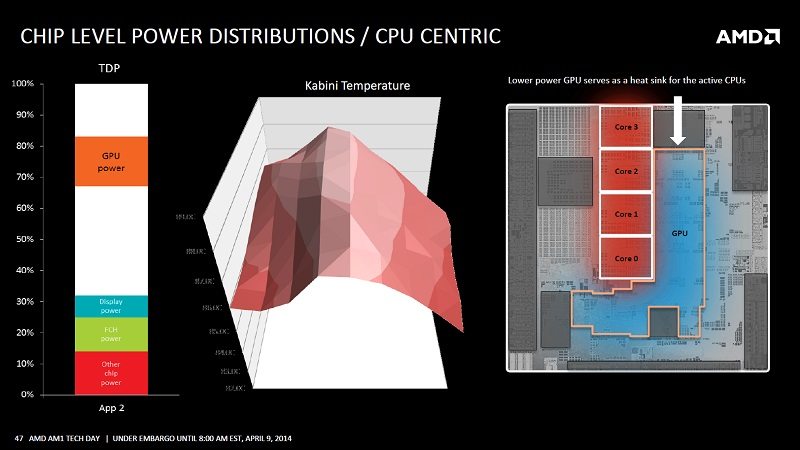AMD Kabini AM1 Athlon 5350 APU (FS1b) Review
Ryan Martin / 11 years ago
AM1 Feature Overview
AMD’s AM1 socketed Kabini platform will offer four APU models at launch, two based on Athlon branding and two based on Sempron branding. These all have identical GPU hardware but there is a bit of clock speed variance. The CPU parts again vary by clock speed but are all broadly similar except the Sempron part which is the only dual core.
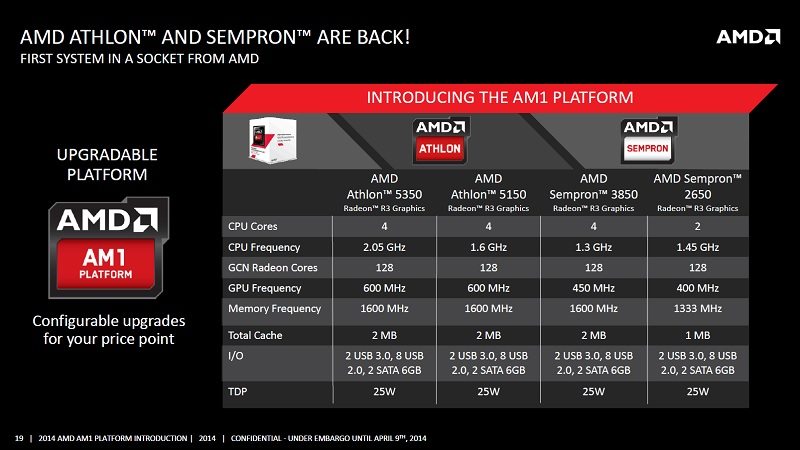
The APUs have incredibly competitive price points of $59, $49 and $39 respectively according to the AMD slides. AMD tell us the 1K tray prices of the units will be $55, $45, $36 and $31 – this suggests to us that the prices on the slides are the retail prices. The retail price for the Sempron 2650 should then be $34 if I am not mistaken. AMD says AM1 motherboards will cost around $25-35 so motherboard and APU combos for the AM1 platform start at just $64!
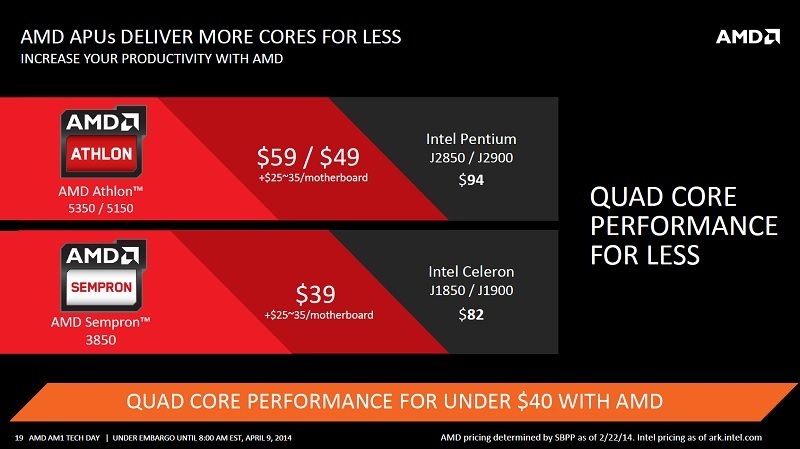
Kabini is an incredible platform purely because of how much it offers for the price. It has two DDR3 1600 memory channels that operate in single channel mode, a UHS-I/SDXC memory card link, dual USB 3.0, 8 USB 2.0, TPM, DisplayPort, HDMI, VGA, dual SATA III, three PCIe 1 X lanes and Gigabit Ethernet! There is of course support for a discrete GPU for even more upgradability down the line.
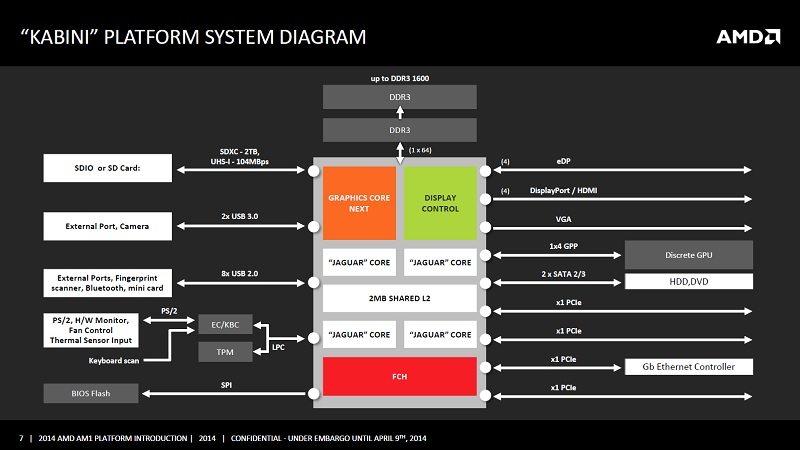
AMD’s quad core Kabini APUs are effectively the same as two Steamroller cores in size. The Kabini APU does share a lot with the Steamroller platform but is designed to operate under lower power scenarios and in a smaller size footprint.
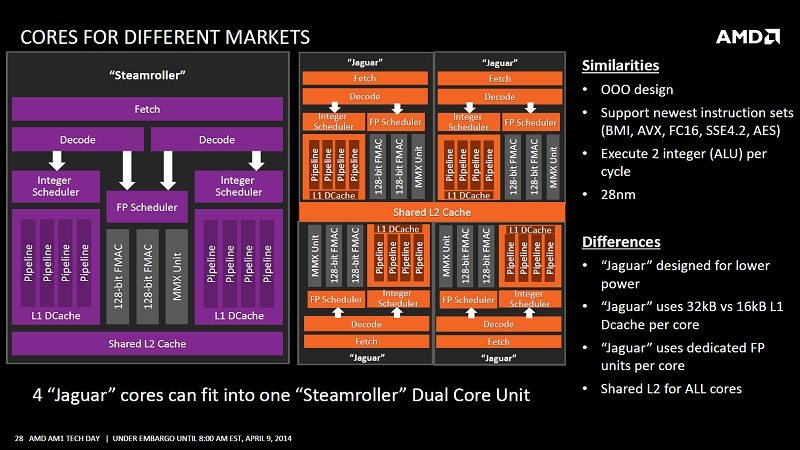
The aim with the Kabini platform has been to improve the IPC and architectural efficiency as much as possible, this is important because in such a mobile-orientated architecture AMD can’t just keep increasing clock speeds. Increasing clock speeds works in the high-end desktop arena but not in the mobile and SFF markets.
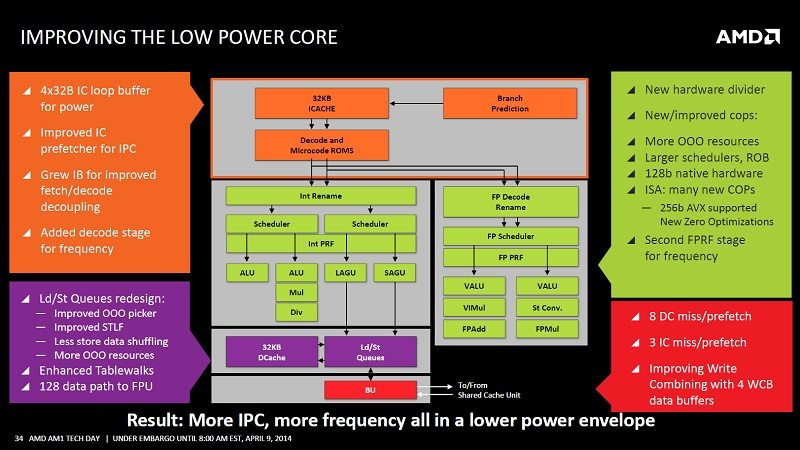
Like with Kaveri AMD is still pushing the “Compute Unit” concept. Kabini has up to six compute units, four CPU and two GPU – therefore one CPU compute unit is a Jaguar x86 core and one GPU compute unit is 64 GCN cores.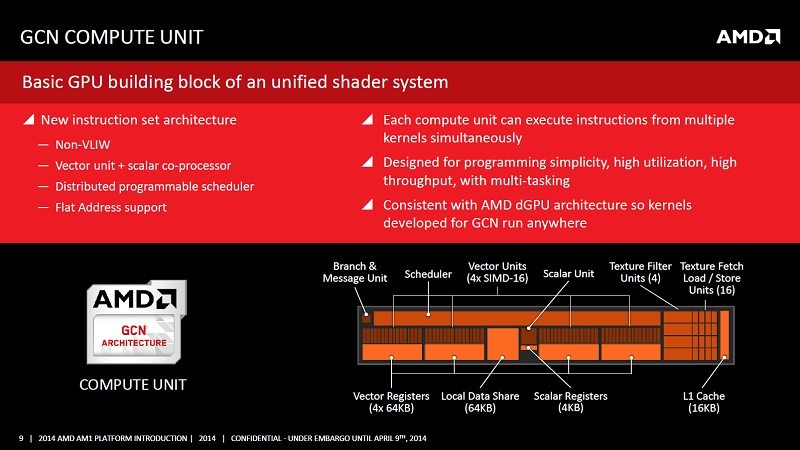
AMD’s graphics parts on the Kabini APUs are “R3 Graphics” which means they sit below the R7 graphics we seen in the desktop graphics and Kaveri products, and below the newly released R5 desktop graphics.
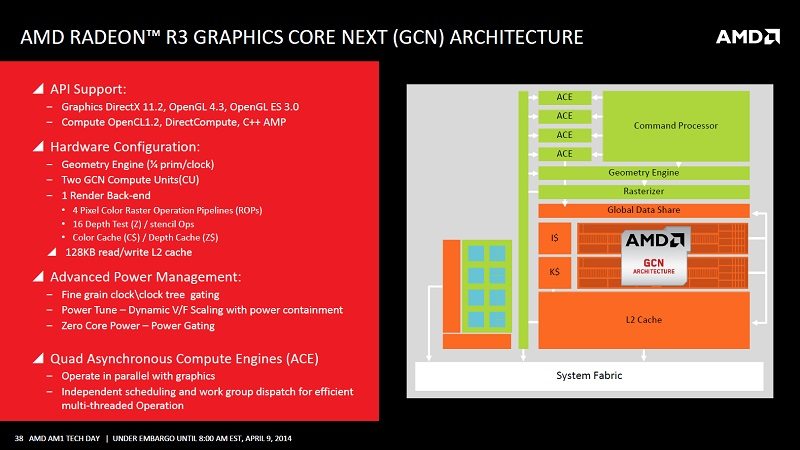
AMD’s Kabini APUs are capable of Ultra HD 4K display through the HDMI (30Hz) or DisplayPort (60Hz) connections. AMD also have support for their Wireless display technology ready with these Kabini APUs. AMD’s integrated Video Codec Engine and Universal Video Decoder will both be hugely popular additions as I can see the AM1 platform being used quite frequently as the basis for media PCs and possibly even Smart TVs!
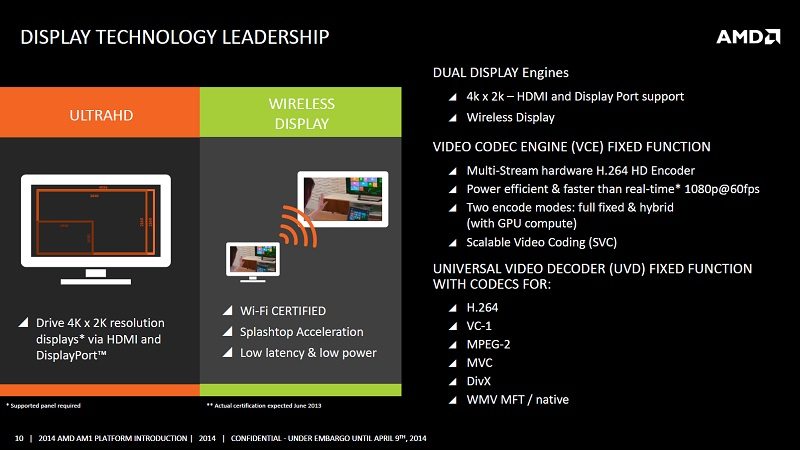
AMD claims significantly more performance than Intel’s Pentium Bay Trail platform and Nvidia’s similarly priced G210 graphics card.
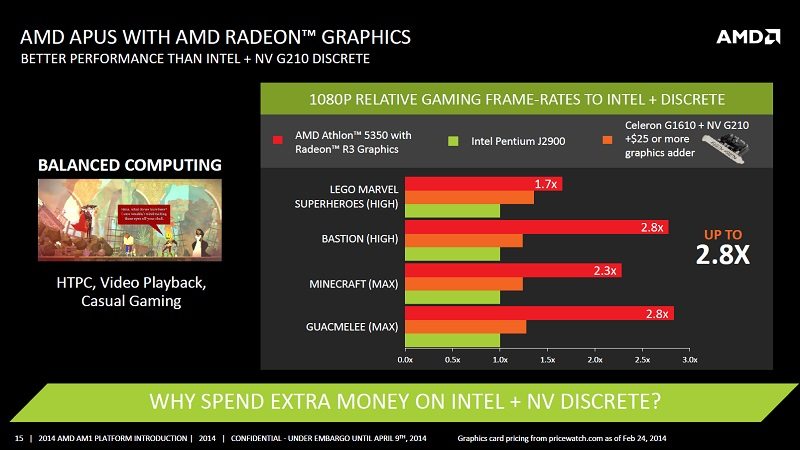
USB 3.0 may not seem like a big deal for a lot of people but for such a low cost platform it is. Not only does AMD claim USB 3.0 support but it also claims that it is capable of exploiting more USB 3.0 performance than Intel’s Bay Trail platform.
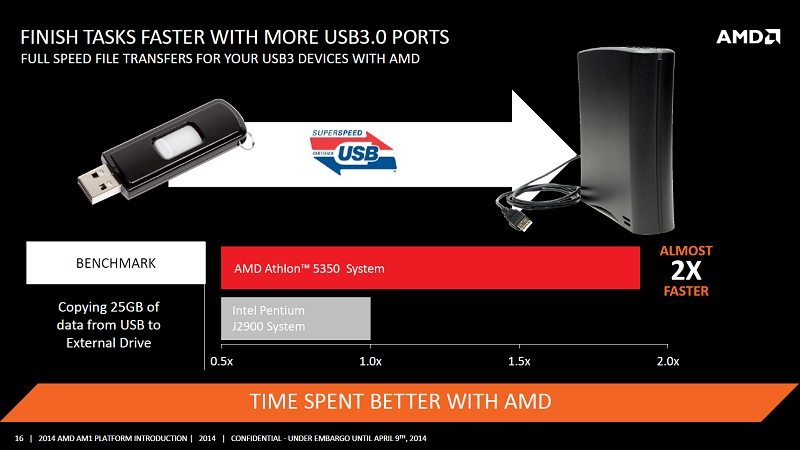
Since everything the AM1 platform uses is “on-die” it is essential that AMD’s Catalyst software package provides up to date graphics and “chipset” drivers. AMD is pledging monthly updates for its AM1 platform.
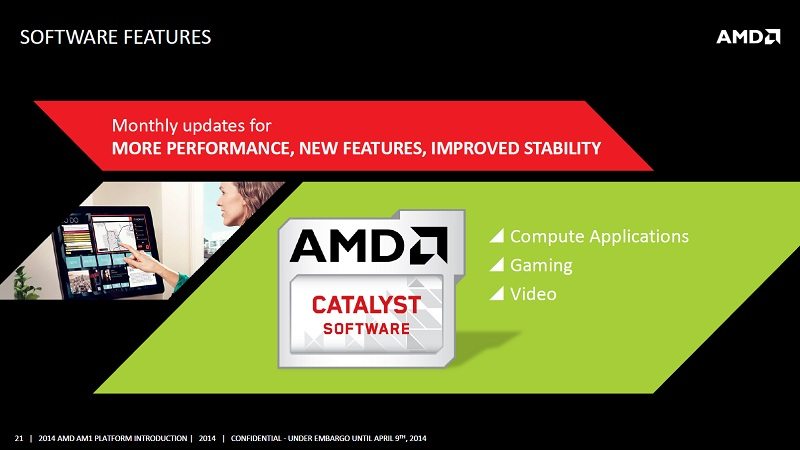
AMD’s AM1 APUs also get support for AMD’s video processing features, like Steady Video and Super Scaling, and AMD’s image enhancement technologies like Dynamic Contrast and Edge enhancement.
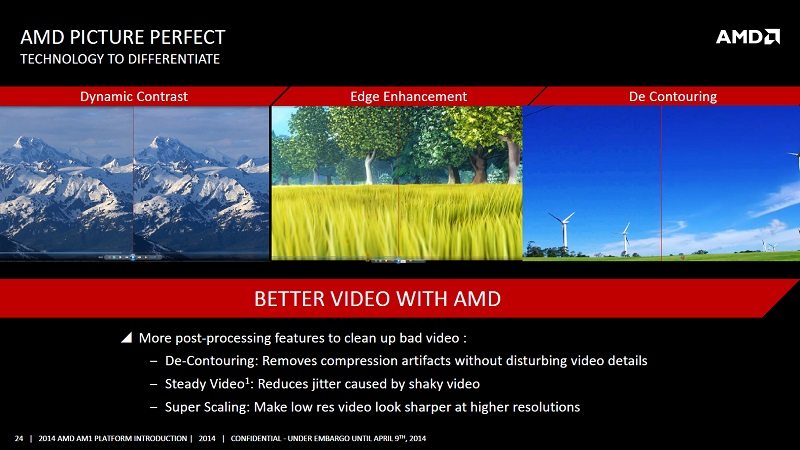
AMD’s HSA enabled JPEG decoder also makes an appearance on Kabini. We first saw this on Kaveri and we’re glad to see the lower cost Kabini platform inheriting some of those premium Kaveri features.
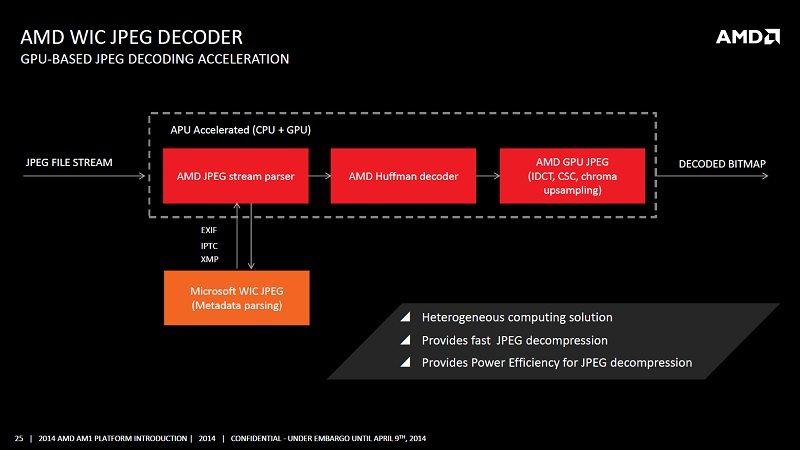
We already implied AMD’s AM1 platform is ideal for home users and AMD is teaming up with BlueStacks to make their PCs even more accessible. By offering native BlueStacks support home users can experience the best of both Android and Windows. I personally would like to see full Android operating systems available for AMD’s Kabini platform because a lot of people are used to working entirely with mobile operating systems like Android.
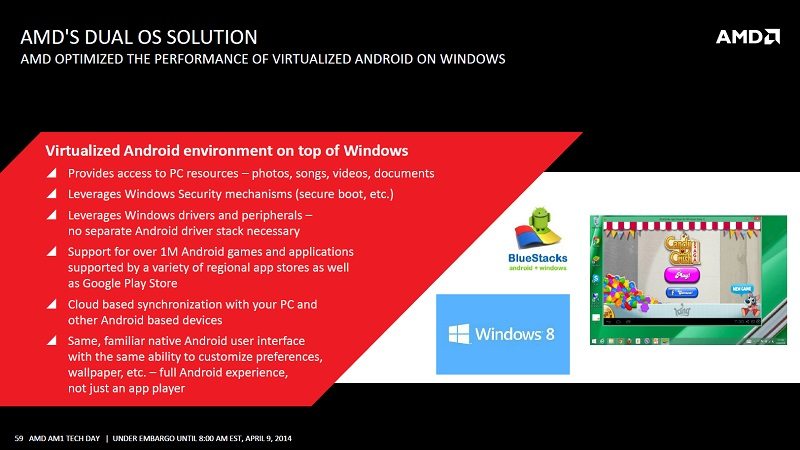
Given the mobile-nature of Kabini power management is at the heart of its design, with an APU the management of the CPU and GPU parts is crucial to its overall operation.
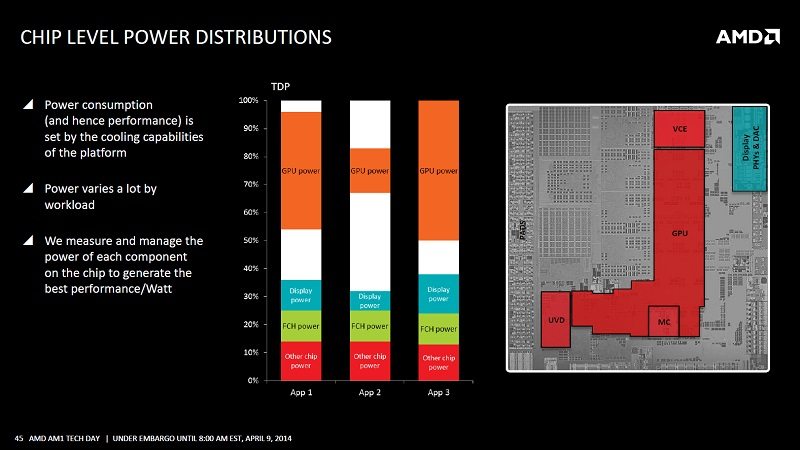
The Kabini APUs manage heat primarily by offsetting load between the CPU and GPU depending on the type of application. When the GPU is active the CPU serves to bring the overall package temperature down and vice-versa.
